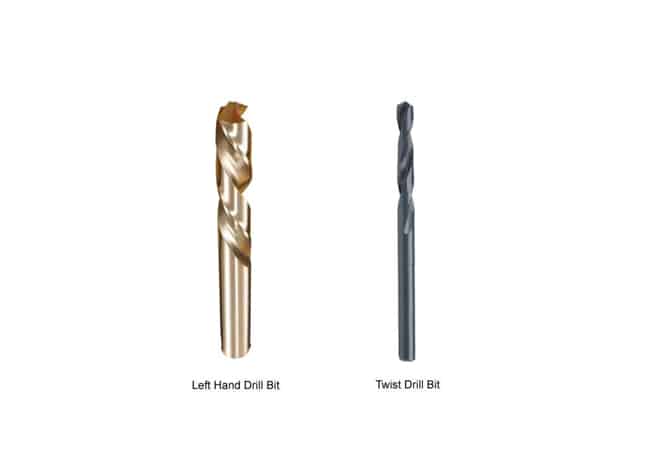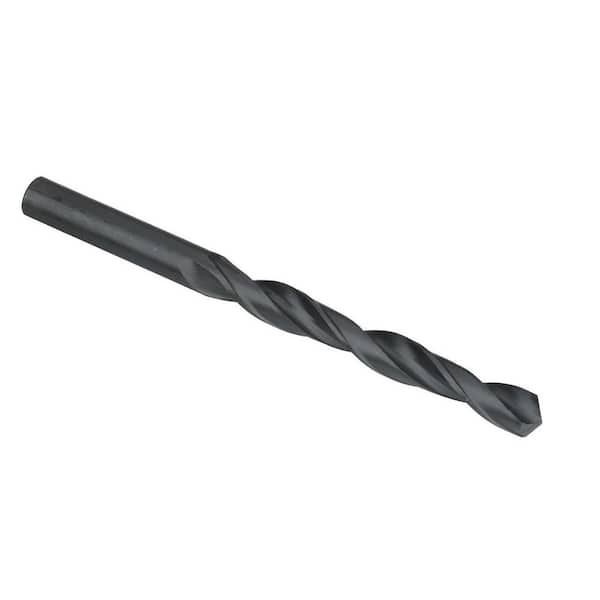Are you curious about why left-handed drill bits are a handy tool to have? Well, let me tell you all about it! Left-handed drill bits may seem like a niche product, but they offer some great advantages that make them worth considering.
Imagine this scenario: you’re working on a project and you encounter a stubborn broken bolt or a stripped screw that won’t budge. Frustrating, right? That’s where left-handed drill bits come to the rescue! These special drill bits have a reverse cutting direction, which means they can actually help loosen stuck fasteners as you drill into them. How cool is that?
But that’s not all! Left-handed drill bits are also great for preventing further damage. Since they rotate in the opposite direction of regular bits, they reduce the risk of metal shavings and debris getting trapped in the hole. This can save you time and effort when it comes to cleaning up and can even prevent potential thread damage.
So, whether you’re a professional tradesperson or a DIY enthusiast, left-handed drill bits are a fantastic addition to your toolkit. They make challenging extraction tasks easier, save you from potential mishaps, and provide an efficient solution when you encounter tough fasteners. Now that you know why they’re so handy, let’s dive deeper into the world of left-handed drill bits!

Why Use Left-Handed Drill Bits?
Left-handed drill bits are a useful tool for many different applications. Whether you’re a professional tradesperson or a DIY enthusiast, these specialized drill bits can offer several advantages over their right-handed counterparts. In this article, we will explore the benefits of using left-handed drill bits and why they are a valuable addition to any toolbox.
The Basics of Left-Handed Drill Bits
Left-handed drill bits, also known as reverse drill bits, have a unique spiral design that rotates counterclockwise. This is the opposite direction to traditional right-handed drill bits, which rotate clockwise. The reverse spiral design of left-handed drill bits offers several advantages in certain situations.
Left-handed drill bits are primarily used for tasks such as removing broken or stripped screws, bolts, and studs. When the drill is set to reverse, the counterclockwise rotation of the left-handed drill bit can grip onto the stuck fastener and help loosen it as it is being drilled. This makes left-handed drill bits an essential tool to have when dealing with stubborn or damaged fasteners.
The Benefits of Left-Handed Drill Bits
1. Easy Removal of Stripped Screws: Left-handed drill bits are incredibly effective in removing stripped screws. As they rotate counterclockwise, the reversed spiral design digs into the stripped screw and helps to extract it from the material effortlessly. This eliminates the need for tedious and time-consuming methods like drilling out the entire screw or using a screw extractor.
2. Reduced Risk of Material Damage: When using traditional right-handed drill bits to remove broken fasteners, there is a higher risk of damaging the surrounding material, especially if the fastener is firmly stuck. The reverse rotation of left-handed drill bits minimizes the chance of material damage, making them a safer option for delicate surfaces.
3. Increased Efficiency: Left-handed drill bits can save time and effort by combining drilling and extraction into a single step. Instead of drilling a pilot hole and then switching to an extractor, left-handed drill bits can achieve both tasks simultaneously. This streamlined process can significantly speed up projects and improve overall efficiency.
Choosing the Right Left-Handed Drill Bit
When selecting a left-handed drill bit, there are a few factors to consider to ensure optimal performance and compatibility with your drill:
Material
Left-handed drill bits are available in various materials, including high-speed steel (HSS), cobalt, and titanium. Consider the material you will be drilling into and choose a drill bit that is specifically designed for that material. For example, cobalt drill bits are excellent for drilling into hard metals, while HSS drill bits are suitable for general-purpose drilling.
Size
Select the appropriate size of the left-handed drill bit based on the diameter of the fastener or screw you need to remove. Make sure to measure the fastener accurately to choose the correct drill bit size. Using an improperly sized drill bit can lead to ineffective drilling and potential damage to the fastener or surrounding material.
Quality
Investing in high-quality left-handed drill bits is essential for durability and optimal performance. Poor-quality drill bits may not have a well-designed reverse spiral pattern, leading to reduced effectiveness in removing stubborn fasteners. Look for reputable brands and read customer reviews to ensure you are purchasing a reliable product.
Maintaining and Using Left-Handed Drill Bits
To get the most out of your left-handed drill bits and extend their lifespan, it is important to follow proper maintenance and usage guidelines:
Proper Storage
Store your left-handed drill bits in a dry and organized manner. Keep them in a dedicated drill bit case or pouch to prevent damage and minimize the chances of misplacing them. Avoid exposing the drill bits to excessive moisture or extreme temperatures, as this can lead to corrosion or weakened performance.
Appropriate Speed and Pressure
When using a left-handed drill bit, carefully adjust the speed and pressure based on the material you are drilling into. Generally, slower speeds are recommended for harder materials to prevent overheating or dulling of the drill bit. Additionally, maintain a steady and even pressure while drilling to achieve desirable results and prevent accidents.
Regular Sharpening
Over time, left-handed drill bits may become dull due to repeated use. Monitor the sharpness of your drill bits and sharpen them as necessary. Dull drill bits can lead to ineffective drilling and cause excessive wear on your drill. Use a sharpening tool or take them to a professional sharpening service to restore their cutting edge.
In conclusion, left-handed drill bits are valuable tools that offer unique advantages in various drilling and fastener removal applications. Their reverse spiral design allows for easy extraction of stripped or broken screws while reducing the risk of material damage. With proper care and usage, left-handed drill bits can be a long-lasting addition to any toolbox, providing you with efficient and effective drilling solutions.
Key Takeaways: Why Use Left-Handed Drill Bits?
- Left-handed drill bits are designed for specific applications and offer unique advantages.
- They are ideal for removing broken or damaged screws or bolts.
- Left-handed drill bits can help prevent damage to the material being drilled.
- Using left-handed drill bits can save time and effort compared to traditional right-handed bits.
- Left-handed drill bits are a versatile tool that should be part of every handyman’s toolkit.
Frequently Asked Questions
When it comes to drilling, left handed drill bits can be a valuable tool to have. Here are some common questions about using left handed drill bits and their benefits.
1. What are the advantages of using left handed drill bits?
Left handed drill bits offer several advantages when compared to traditional right handed bits. One major benefit is their ability to effectively remove broken or stripped screws and bolts. Due to their reverse cutting action, left handed drill bits can grip onto the broken fastener and gradually turn it out of the material. This can save you a lot of time and effort compared to other extraction methods.
Another advantage of using left handed drill bits is their ability to prevent the material from splintering or cracking. As they rotate counter-clockwise, left handed drill bits can reduce the risk of damage to the material, providing cleaner and neater holes. This is particularly useful when working with delicate materials or when precision is required.
2. Can left handed drill bits be used with any type of drill?
Left handed drill bits can be used with most types of drills, including both handheld drills and drill presses. However, it’s important to ensure that the drill has a reverse or anti-clockwise rotation setting. Left handed drill bits are specifically designed to work with this type of rotation, so using them with a drill that only has a clockwise rotation may not yield the desired results.
Additionally, it’s crucial to select left handed drill bits that fit the chuck size of your drill. Most drills have a standard chuck size of either 1/2 inch or 3/8 inch. Choosing drill bits with the appropriate shank diameter will ensure proper fit and performance.
3. Are left handed drill bits suitable for all materials?
Left handed drill bits can be used with a wide range of materials, including wood, metal, plastic, and composites. However, there are certain considerations to keep in mind when selecting the appropriate drill bit for specific materials. For example, when drilling into metal, it’s important to use a left handed drill bit made from high-speed steel (HSS) or cobalt, as these materials provide the necessary hardness and heat resistance.
Similarly, when working with hard materials like concrete or stone, diamond-tipped left handed drill bits are recommended. These bits have a strong cutting edge that can withstand the hardness of such materials. It’s important to choose the right type of left handed drill bit based on the material you’ll be drilling into to achieve the best results.
4. How do I use left handed drill bits for extracting broken fasteners?
To use left handed drill bits for extracting broken fasteners, start by selecting a drill bit slightly smaller than the diameter of the fastener. Secure the material and drill a pilot hole into the center of the broken fastener using the left handed drill bit. As the drill bit rotates counter-clockwise, it will catch onto the fastener and gradually loosen it.
If the fastener gets completely unscrewed during the drilling process, you can simply remove it with pliers or by hand. If the fastener remains stuck after drilling, you can continue using larger left handed drill bits until the fastener is fully removed. Remember to apply steady and consistent pressure while drilling to avoid damaging the surrounding material.
5. Can left handed drill bits also be used for regular drilling tasks?
Left handed drill bits can certainly be used for regular drilling tasks. While their reverse cutting action is particularly beneficial for extraction purposes, left handed drill bits can still create clean and accurate holes in various materials. However, keep in mind that the countersinking or deburring function, often found in traditional right handed drill bits, may not be as effective with left handed bits.
When using left handed drill bits for regular drilling, it’s important to adjust the drill’s rotation direction accordingly. Always set the drill to rotate counter-clockwise when working with left handed bits. This will ensure the drill bit is effectively cutting into the material and producing the desired hole.

why use LEFT HAND “drill bits” (extracting broken bolts)
Summary
Left-handed drill bits are useful because they have special features that make drilling easier for left-handed people. They have a reverse cutting direction, allowing them to extract broken screws and bolts more easily. By using left-handed bits, there is also a reduced risk of damaging the material being drilled. Additionally, they can help prevent the drill bit from getting stuck in the material. Left-handed drill bits are a practical choice for left-handed individuals and can make drilling tasks more efficient and effective.
In conclusion, left-handed drill bits provide a solution for left-handed individuals who want a better drilling experience. They offer benefits such as a reverse cutting direction, easier extraction of broken screws, reduced risk of material damage, and prevention of drill bit getting stuck. With these advantages, left-handed drill bits can make drilling tasks smoother and more successful for left-handed users.
